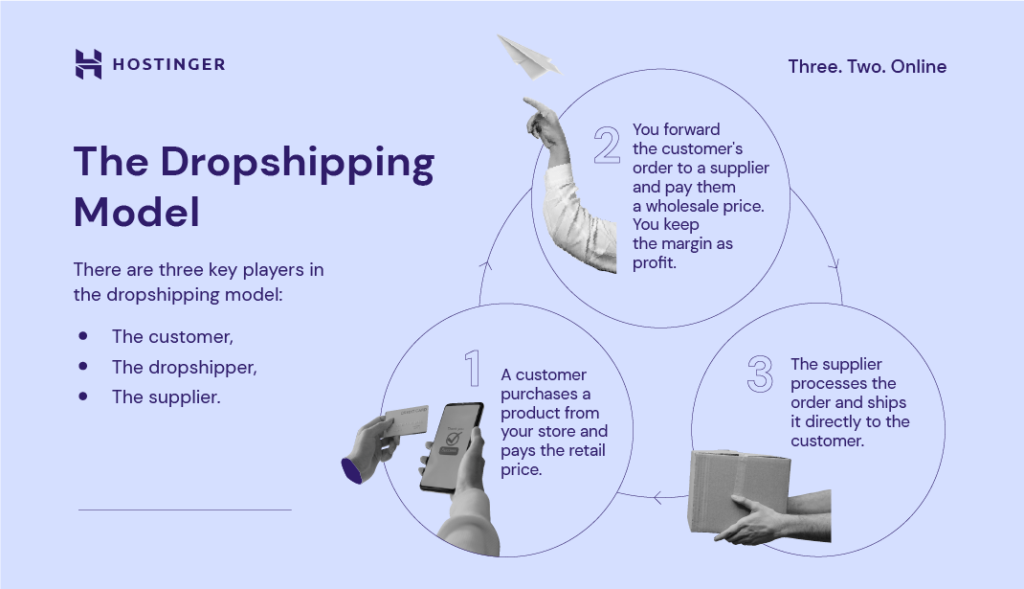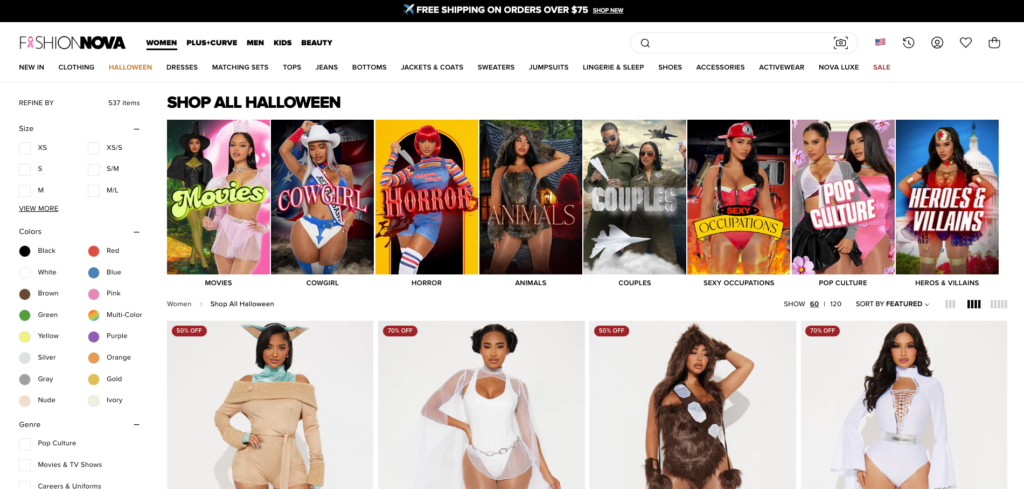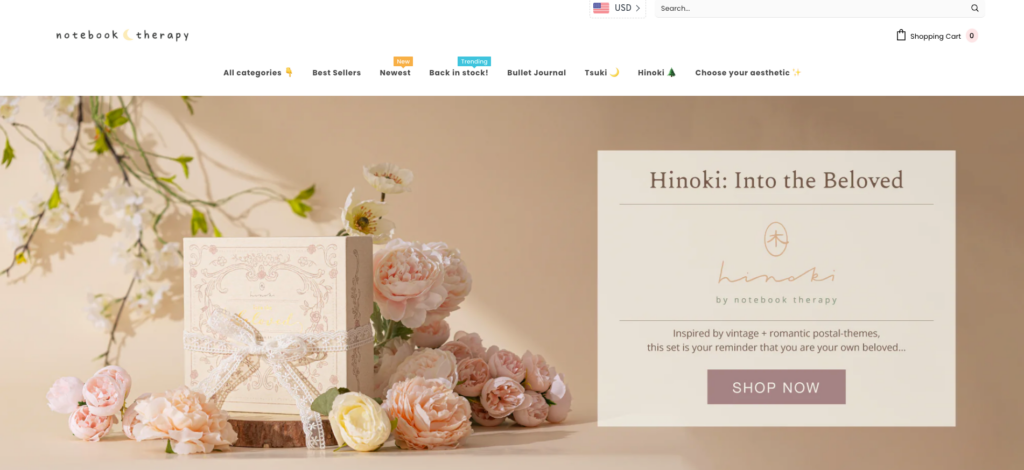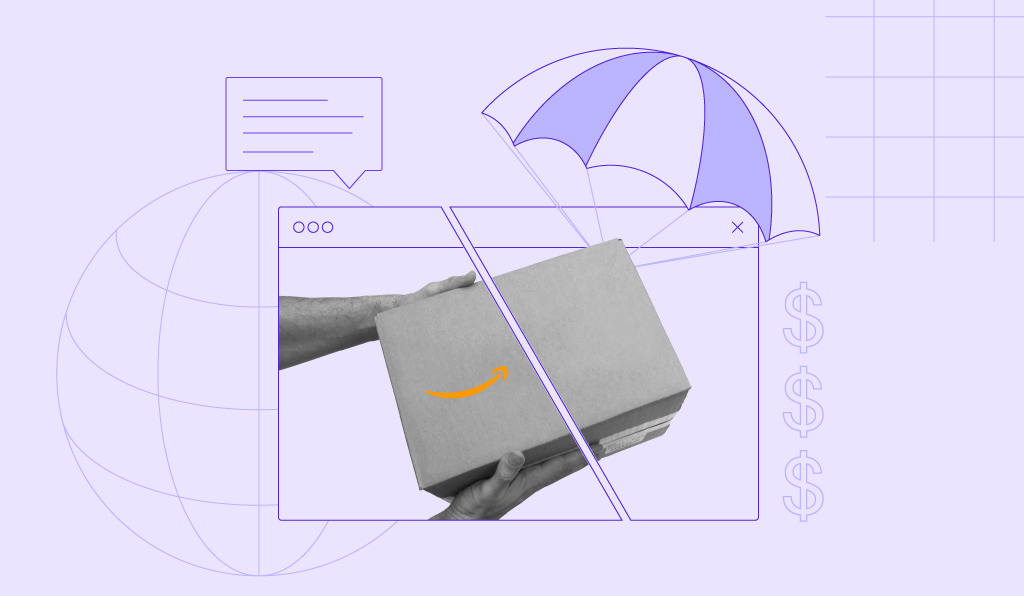How to start dropshipping in 2024 – a practical guide

Dropshipping is one of the easiest ways to start making money online. It doesn’t require any big investments, specific skills, or large spaces for storing the inventory. It’s a type of business that nearly anyone with some drive and just the right amount of knowledge can do.
So if you have the drive, we can provide you with the knowledge. In this article we’ll walk you through the seven steps to starting a dropshipping business and cover beginner mistakes to avoid to bring you closer to success.
What is dropshipping?
Dropshipping is a way to sell products online without keeping any inventory. Instead, you partner with third-party suppliers – like manufacturers, wholesalers, or retailers – who handle storage and shipping for you.
In this setup, your job as the ‘dropshipper’ is to manage the eCommerce store and market the products. The supplier takes care of the stock and delivery.
Here’s how the dropshipping business model works:
- When a customer places an order on your store, they pay the retail price you set.
- You, the dropshipper, send the order to your supplier and pay them the wholesale price. The difference between what the customer pays and what you pay the supplier is your profit. For example, if the retail price is $100 and the wholesale price is $70, you keep $30.
- The supplier processes the order and ships the product directly to your customer.

How to start a dropshipping business?
Now that you know how it works, here are seven steps to building a successful dropshipping business.
- Choose a business niche. Figure out what products to sell and what market to focus on.
- Find dropshipping suppliers. Pick trustworthy suppliers that provide quality products in your niche.
- Build an online store. Choose a hosting provider and a platform to build your website.
- Design the brand identity. Create a name, a logo, and a color palette that suits your business and target audience.
- Take care of the finances. Set up a business bank account and consider the taxes and fees you should pay when calculating pricing.
- Register your business. Decide on a legal business structure and get the necessary licenses to run your online store.
- Promote the online store. Bring traffic and sales to your website with SEO, ads, and social media.
Now let’s explore each step in more detail.
1. Choose a dropshipping business niche
Picking the right niche for your dropshipping business lets you target a specific audience, making it easier to develop marketing strategies that truly connect with their interests and needs.
Focusing on a specific dropshipping niche also simplifies product sourcing and marketing. By understanding what your audience is looking for, you’ll have an easier time picking suppliers whose products match your brand.
Not sure where to start? Here are tips for choosing a dropshipping business niche:
- Start with your interests. It’s a lot easier to stay motivated and engaged when you care about what you’re selling. Plus, your genuine enthusiasm will shine through in your marketing.
- Check if there’s a demand. Use tools like Google Trends to see if people are interested in your chosen niche. For example, if eco-friendly products are gaining popularity, you could tap into that trend to boost seasonal sales.
- Assess your potential competition. Look for a niche with some demand but not completely swamped by big players, so you’ll have room to grow.
- Make sure it’s profitable. Compare wholesale prices from suppliers like AliExpress or Zendrop with the prices of your competitors. The bigger the difference, the better your chances of making a profit.
- Think about shipping and suppliers. Look into how easy it will be to source products in your niche. Make sure your chosen suppliers can ship quickly and reliably to your target customers, as delays can hurt your reputation.
Let’s check out some inspiring examples of successful dropshipping businesses.
Meowingtons taps into the pet supplies niche. It stands out by specializing in cat essentials and unique products that appeal specifically to cat lovers.

Fashion Nova dominates the fashion niche, offering a wide selection of trendy, budget-friendly clothing for all genders. It also features seasonal collections for holidays like Halloween and Valentine’s Day, creating a year-round appeal.

Got a passion for a unique hobby? Embrace it like NotebookTherapy. This dropshipping store corners the market for high-quality, East Asian-inspired stationery and minimalist, kawaii-themed products, drawing in fans of these niche aesthetics.

2. Find dropshipping suppliers
Your choice of suppliers is key to your dropshipping success, as they don’t just supply the products but also handle all the logistics and customer deliveries.
The easiest way to find reliable suppliers is through dropshipping platforms like Doba, SaleHoo, AliDropship, and Wholesale2B, which connect you with various retailers in different categories. If you’re interested in suppliers that offer quick shipping for US and EU markets, consider platforms like Spocket and Modalyst.
When searching for suppliers, consider the following:
- Legitimacy and reputation. To avoid scams, check if the supplier has a business license and browse reviews for insights into their service quality. A supplier’s client list can also hint at their reputation. Try to find as much information about the supplier online as you can.
- Minimum order requirements. Some suppliers require a minimum order upfront. Usually, the more you order, the lower the cost per item.
- Extra fees. Besides wholesale pricing, consider additional costs like monthly subscriptions, packaging fees, platform charges, and refund fees. Factor these in when deciding on the profit margins ‒ a good benchmark is around 20-40% after all expenses.
- Customer support. Make sure the supplier offers reliable customer support with quick response times, especially in case of returns or complaints from your customers.
- Product quality. Order a sample to evaluate quality and packaging firsthand. Comparing similar items from multiple suppliers is a great way to make sure you’re offering the best products.
- Order fulfillment. Note how long it takes for the supplier to process and deliver orders and see if they handle returns smoothly.
- Website integration. Some dropshipping platforms, like AliDropship, offer integrations that let you import products directly into your website with just a few clicks.
Once you find a suitable supplier, set up a dropshipping agreement contract to make the partnership official. This agreement outlines your business arrangements with them, such as the wholesale prices, delivery standards, damaged items, and so on ‒ keeping everything clear from the start. Make sure to get advice from a legal expert to make sure everything is in order.
3. Create your online store
The next step is to create an online space to sell your products. While third-party platforms, like Etsy and eBay, exist, they are highly competitive and charge additional transaction fees when you make a sale. That’s why we recommend creating your own online store.
If you prefer a visual guide, feel free to watch our video on creating an online store.

If you’d rather follow a written guide, read on.
Many website-building solutions can help you create a professional dropshipping store, but we recommend using WordPress for several reasons.
WordPress offers great flexibility and scalability, giving you full control over your site’s design and growth. It also comes with powerful tools like SEO and blogging features to help attract organic traffic to your store.
If you’re on a budget, WordPress has tons of free and affordable plugins to expand your site’s functionality. With plugins like WooCommerce, you can easily manage products, payments, and shipping for dropshipping.
Our annual Managed WooCommerce hosting plans, starting at ₱519.00, include free one-year domain, free SSL, weekly backups, auto updates, and lots of AI tools to simplify website building and maintenance.

Follow these steps to build a website for dropshipping using WordPress:
- Purchase a WooCommerce hosting plan. At Hostinger, this hosting plan already includes WordPress and WooCommerce, which are set up and ready to use. You’ll also have to register a domain name. See our guide on choosing the perfect domain name for helpful tips.
- Create essential pages. Set up key pages like Home, Store, About Us, and Contact pages. We recommend using a WooCommerce theme as they usually include eCommerce functionality and seamless integration with the plugin.
- Add navigation. Organize product categories logically to make browsing easy, such as grouping items by type or purpose. Create a main menu linking to key pages and categories, so customers can quickly find what they need. See our guide on adding pages to a WordPress menu for the steps.
- Set up your store. Configure settings for products, payments, and shipping. For dropshipping, turn on automated order forwarding and email notifications to keep customers in the loop. Our WooCommerce guide covers the setup in detail.
- Add products. Make sure each product has clear descriptions, pricing, and shipping info. Use metadata like tags, categories, and SEO-friendly keywords to help your products rank well in search engines. Include quality images and customer reviews to boost trust and attract more buyers. Use our AI image description generator to create product descriptions quickly and easily.
4. Build your dropshipping business brand identity
Besides choosing a niche, strong branding helps your business stand out from the crowd. The more unique your branding, the more likely customers will remember you and return to shop.
Our guide on building a brand can get you started, but here are the key steps for dropshipping businesses:
- Define your brand positioning. Identify the main value or feature that sets you apart from competitors, and highlight it across all your marketing efforts.
- Pick a memorable business name. Make sure it’s easy to pronounce and spell. Make sure this name is also reflected in your domain name.
- Create a visual identity. Choose a color palette that complements your brand and appeals to your audience. Check out our website color scheme guide for inspiration.
- Design a simple, eye-catching logo. A good logo helps customers instantly understand what your business offers, making it easy for them to associate it with your products or services.
- Select unique yet readable fonts. Use a distinct font for your logo to reflect your brand’s personality. For everything else ‒ your website, social media, or emails ‒ stick with simple, easy-to-read fonts to improve your content’s readability.
5. Plan the financial side
It’s a good idea to keep your personal and business finances separate right from the start. This makes it easier to track expenses and revenue related to your online business. It also keeps it straightforward if you need to handle any legal or tax matters.
The specific steps you’ll need to take can vary by country and region, so we recommend checking with a local financial consultant to make sure you’re set up correctly. Generally, it’s good to have the following ready for your dropshipping business:
- Business bank account. Open an account under your brand name and use it solely for business transactions, like receiving customer payments and paying suppliers.
- Resale certificate. In many areas, you’ll need a resale certificate to sell products sourced from elsewhere. Check with your local government to see if you need to apply for one.
- Sales tax. Some countries require you to collect sales tax from customers. Make sure to review local tax regulations for both your location and that of your suppliers, so you can include any taxes in your pricing.
- Maintenance costs. Don’t forget to budget for platform fees and marketing expenses. Including these in your pricing helps cover ongoing costs and supports business growth.
6. Legally register your dropshipping business
Important! Hostinger does not offer legal advice. This section only provides a general overview of the legal factors to consider. We recommend consulting with proper legal entities before choosing your business structure.
Sorting out the legal side of your dropshipping business is an important step. Start by checking if you need a business license to dropship in your area. Requirements can vary, so it’s essential to research your specific country or region.
If you’re in the United States, you’ll likely need a sales tax ID and an employer identification number (EIN) to manage taxes and apply for wholesale accounts.
Once you’ve covered the basics, consider registering your business as a legal entity to protect yourself from liability. Having a legitimate business structure can also help you build trust with suppliers and partners.
Here are three common business structures:
- Sole proprietorship. Your business income is taxed as personal income, but this option is riskier since your personal assets aren’t protected from business liabilities.
- Limited liability company (LLC). An LLC separates your personal and business assets, giving you more protection. Remember, though, that you’ll have different legal tax requirements for taxes as a business owner.
- Corporation. Like an LLC, a corporation is a separate legal entity. However, it’s owned by shareholders and run by directors.
Besides setting up your business structure, adding these essential web pages to your online store can make it look more professional and build trust with customers:
- Refund policy. This page reassures customers that they’re shopping in a safe place. Clear refund terms help them feel more confident about making a purchase.
- Return or exchange policy. Since online buyers can’t see or touch products, a return policy offers peace of mind, allowing them to exchange or return items that don’t meet their expectations.
- Terms and conditions. This page outlines the rights and responsibilities of both your business and customers, helping to manage expectations and avoid misunderstandings.
- Privacy policy. Let customers know how you handle their personal information. Be clear about how data is collected, used, and shared to show that you take their privacy seriously. Also, make sure you follow GDPR regulations meticulously to avoid any legal issues.
7. Optimize and market your dropshipping store
Say you’ve published a website, and your business is now legal. Now, let’s promote your products and build a customer base.
Digital marketing offers many ways to get the word out. Here are some methods to help drive traffic to your online store and boost sales:
- Search engine optimization (SEO). Use strategies to help your website rank higher on search engines and get more visibility. Our list of WordPress SEO best practices shows how it works.
- Blogging. Create content that informs your target audience about your brand. For example, write listicles or how-to guides that naturally feature your products and show how they can benefit users. WordPress started as a blogging platform, so you can launch your blog without relying on plugins.
- Email marketing. Add a subscription form to your store and offer a welcome discount to new subscribers. Send emails about product launches, discounts, or special offers to keep customers interested.
- Social media marketing. Share your products on platforms like Instagram or TikTok to reach more people. These visual platforms are perfect for showcasing products and building a following.
- Referral marketing. Once you’ve made a few sales, encourage customers to refer friends and family by offering a small commission ‒ usually around 10-20% ‒ for purchases made through their referral links.
- Affiliate marketing. This method is similar to referral marketing but with influencers or bloggers promoting your products. Commissions are usually higher since affiliates bring more exposure to your store.
- Performance marketing. Use paid ads on platforms like Google or Facebook to reach targeted audiences. These ads may be pricier, but they make reaching the right customers possible.
At this point you can consider showcasing your product listings on marketplaces like Amazon or eBay to reach customers who are more comfortable shopping there. If you go this route, multi-channel selling tools like Sellbrite can help manage your inventory and orders across multiple platforms hassle-free.
Why start a dropshipping business?
Still on the fence about dropshipping? Here’s why this business model is so popular among entrepreneurs:
- Low startup costs. Dropshipping lets you skip the upfront costs of buying inventory and managing logistics. You can start selling without needing to produce or store products yourself.
- Low risk. Since you’re not paying for inventory, you can list various products and easily swap out poor performers for new items to sell.
- Flexibility. You can run your dropshipping business from anywhere with an internet connection. Just keep up with communication with your suppliers and customers.
- Scalability. Since your suppliers handle shipping, it’s easier to manage an increase in orders as your business grows without taking on extra work.
That said, dropshipping isn’t flawless. Here are a few downsides to consider:
- Less control. Since dropshippers rely on suppliers for production, packaging, and delivery, issues like mishandling, poor packaging, or shipping delays are out of your hands. If something goes wrong, you won’t be able to fix it directly.
- Stock shortages. Suppliers don’t always give a heads-up when products go out of stock, which could lead to listing unavailable items in your store. Regularly checking in with suppliers helps prevent this.
- Assuring quality. Not being able to see and handle the products doesn’t let you ensure they are of the highest quality. That’s why it’s crucial to buy the products from the supplier and see them yourself before you begin selling them in your store.
Most common dropshipping mistakes
When starting a dropshipping business, make sure to avoid these common mistakes:
- Choosing the wrong niche. Going too broad or picking a highly competitive niche can make it tough to stand out. Doing some market research can help you find a more focused, manageable niche.
- Skipping branding and marketing. With other dropshippers likely selling similar products, building a strong brand is key to attracting attention and setting yourself apart.
- Using a poor-quality hosting service. A fast, secure hosting provider is essential for a smooth shopping experience. If you hate browsing through a slow, broken website, so do your customers.
- Not optimizing for customers. Test your site’s usability regularly to see where users might be dropping off, and make changes as needed to improve conversions.
- Lack of customer support. Make it easy for customers to reach out by adding a contact form or live chat for quick help and feedback.
- Not staying in touch with suppliers. Regular check-ins with your suppliers can help you monitor stock levels and shipping timelines, reducing unexpected issues.
Conclusion
The dropshipping model is perfect for those wanting to start an online business with less experience and a limited budget, as it requires no inventory management.
With the right niche, reliable suppliers, and a solid website, you’ll be on your way to success in no time. Remember to do your financial and legal due diligence before launching your online store, and continuously monitor and adapt your strategies for optimal results.
We hope you find this tutorial useful. Good luck!
How to start dropshipping FAQ
Is dropshipping easy to start?
Dropshipping is one of the easiest and lowest-risk business models to start, as you won’t need to handle the logistics. Here’s how it works: choose a niche and reliable supplier, build the store, take care of legality and finances, and sell the products. The supplier will handle the storing and shipping of the items.
Is dropshipping worth it?
Absolutely! Many business owners find dropshipping worthwhile because it has minimal risk. You can focus on growing your business and scaling up without a huge upfront investment or handling logistics.
How profitable is dropshipping?
Dropshipping can be a profitable business model. Many dropshippers make over 50% more profit than those who manage their own inventory. Since you don’t need to worry about warehousing or excess stock, you’ll have fewer expenses than traditional business models.
Can you start a dropshipping business with no money?
Yes, technically, since you can sell products without holding inventory. Some eCommerce marketplaces even allow you to list items for free. However, it’s often better to create your own website to avoid transaction fees.




Comments
November 15 2023
I enjoyed reading this blog, everything was super clear and simple to understand !
November 22 2023
Thank you for the kind words! Best of luck with your dropshipping journey ?
November 24 2023
wonderful statement!a Very simple and well briefly explanation about drop shipping
November 24 2023
Thank you for your kind words! If you have any other questions about dropshipping or any other topic, please don't hesitate to ask ?
November 27 2023
I heard of something like this, but never knew how to get started. This was very helpful & information was right on point! Thank you.
November 30 2023
You're welcome! Please don't hesitate to reach out to our Customer Success Team if you have any further questions or need additional guidance. We're always happy to help ?
June 17 2024
I also start my own online bussiness of dropshipping store
June 20 2024
That's fantastic to hear! Best of luck with your dropshipping store :)
July 07 2024
I want start this business but i had no idea to start.
July 10 2024
Hello! We're glad you're interested in starting a dropshipping business. You can begin by following our step-by-step guide in the article to get started ;)
September 27 2024
I would like to know more about how to dropship
October 02 2024
I'm happy you're excited about dropshipping! If you’d like to dive deeper, you could start by learning about the best dropshipping website builders. Wishing you the best of luck with your business! ;)